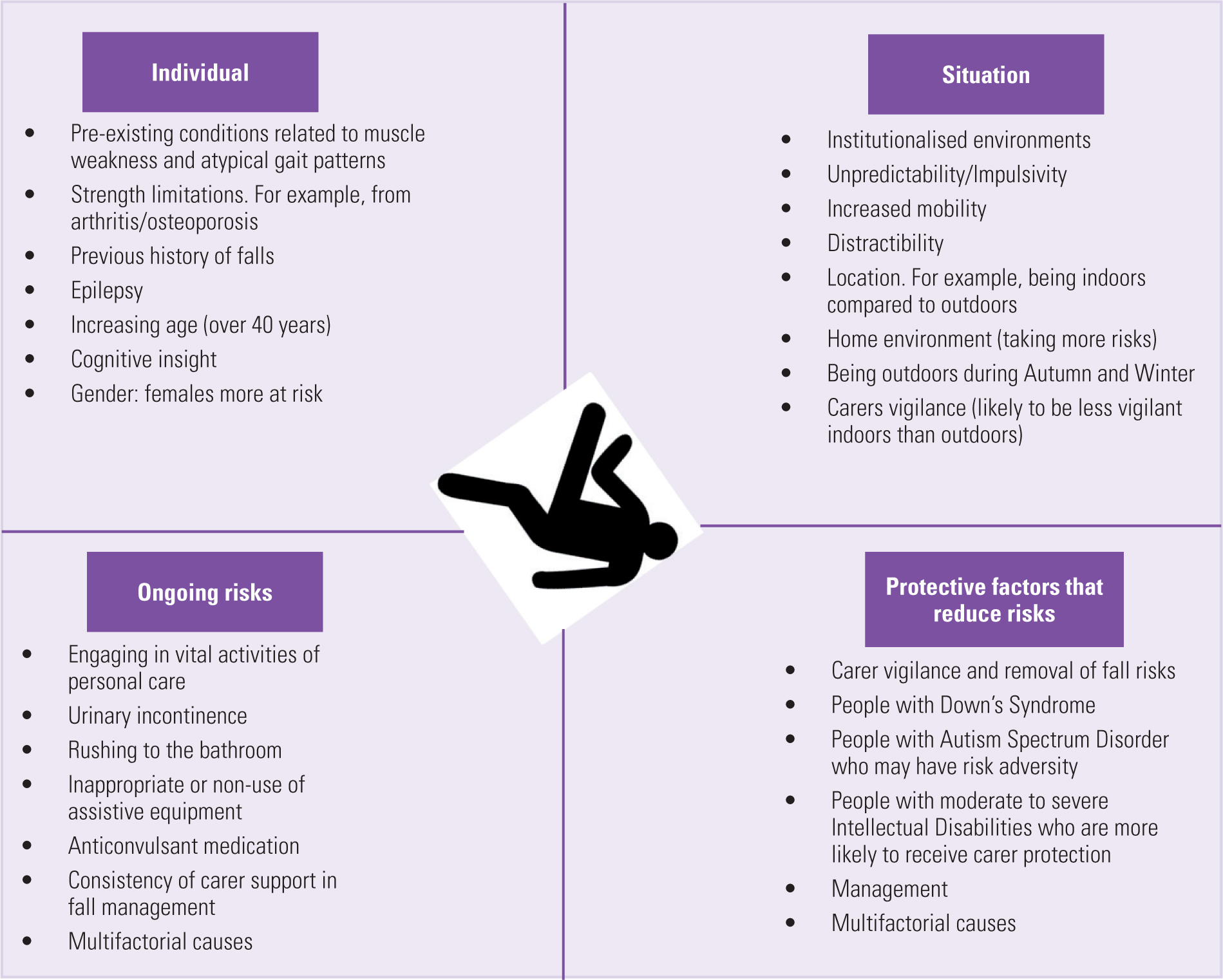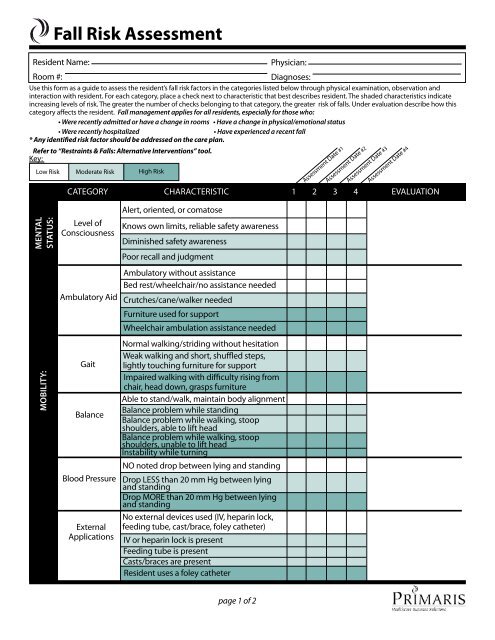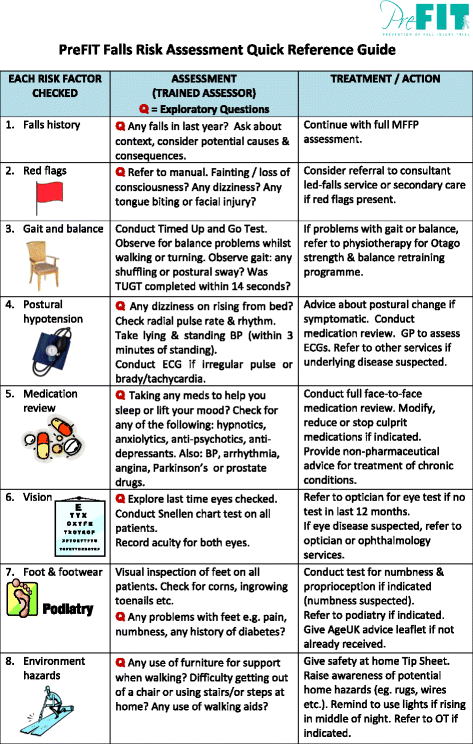The smart Trick of Dementia Fall Risk That Nobody is Discussing
What Does Dementia Fall Risk Mean?
Table of ContentsThe smart Trick of Dementia Fall Risk That Nobody is Talking AboutThe Greatest Guide To Dementia Fall RiskThe 9-Minute Rule for Dementia Fall RiskThe Main Principles Of Dementia Fall Risk Everything about Dementia Fall Risk
In the area, poor road illumination or vulnerable creeks and landfills may also cause crashes. Loss Danger Analysis Device (FRAT) is a 4-item falls-risk screening device for sub-acute and residential care. The FRAT has three areas: fall danger condition, risk aspect list, and action strategy. A Fall Risk Status includes information concerning background of current drops, medicines, emotional and cognitive standing of the individual.If the person ratings on a threat variable, the matching number of factors are counted to the individual's fall threat score in the box to the far. If a client's fall danger score amounts to five or greater, the person is at high risk for falls. If the patient ratings only four factors or lower, they are still at some threat of falling, and the registered nurse should utilize their best scientific assessment to handle all fall danger factors as component of a holistic treatment strategy.
These conventional methods, in basic, aid create a secure setting that lowers accidental drops and marks core preventative actions for all people. Indicators are essential for people at threat for drops.
The 6-Minute Rule for Dementia Fall Risk
Wristbands should consist of the client's last and first name, day of birth, and NHS number in the UK. Just red color must be utilized to signal unique individual condition.
Items that are as well much may call for the client to connect or ambulate unnecessarily and can potentially be a danger or add to falls. Helps stop the individual from heading out of bed without any aid. Registered nurses react to fallers' telephone call lights more quickly than they do to lights started by non-fallers.
Visual impairment can substantially cause drops. Hip pads, when worn effectively, may minimize a hip crack when loss happens. Maintaining the beds closer to the flooring reduces the risk of falls and significant injury. Placing the mattress on the flooring dramatically decreases autumn threat in some medical care settings. Low beds are developed to minimize the range a patient falls after moving out of bed.
The 6-Second Trick For Dementia Fall Risk
Clients who are high and with weak leg muscle mass who try to sit on the bed from a standing setting are likely to drop onto the bed due to the fact that it's too low for them to lower themselves securely. If a high individual attempts to get up from a reduced bed without support, the patient is likely to fall back down onto the bed or miss out on the bed and fall onto the floor.
They're created to promote prompt rescue, not to avoid falls from bed. Audible alarms can also remind the patient not to obtain up alone. Making use of alarm try here systems can also be a replacement for physical restrictions. Besides bed alarm systems, boosted guidance for high-risk patients additionally may aid prevent drops.

People with an evasion stride boost autumn chances significantly. To minimize fall threat, footwear ought to be with a little to no heel, thin soles with slip-resistant tread, and click to read support the ankle joints. Suggest client to utilize nonskid socks to stop the feet from sliding upon standing. Motivate individuals to put on ideal, well-fitting shoesnot nonskid socks for ambulation.
The Definitive Guide for Dementia Fall Risk
In visit a research, homes with sufficient illumination record less drops (Ramulu et al., 2021). Improvement in illumination at home might decrease fall prices in older adults.

Caretakers are effective for guaranteeing a secure, protected, and risk-free environment. Studies showed very low-certainty proof that caretakers minimize fall risk in severe care medical facilities and just moderate-certainty that options like video tracking can minimize caretaker usage without raising fall risk, recommending that sitters are not as helpful as originally believed (Greely et al., 2020).
The 8-Minute Rule for Dementia Fall Risk

Boosted physical conditioning minimizes the risk for drops and restricts injury that is endured when autumn takes place. Land and water-based exercise programs may be in a similar way advantageous on balance and stride and therefore reduce the risk for falls. Water workout may contribute a positive benefit on equilibrium and gait for ladies 65 years and older.
Chair Increase Workout is a basic sit-to-stand exercise that helps enhance the muscle mass in the upper legs and buttocks and enhances mobility and freedom. The objective is to do Chair Surge workouts without making use of hands as the customer becomes stronger. See sources section for an in-depth direction on just how to execute Chair Increase exercise.